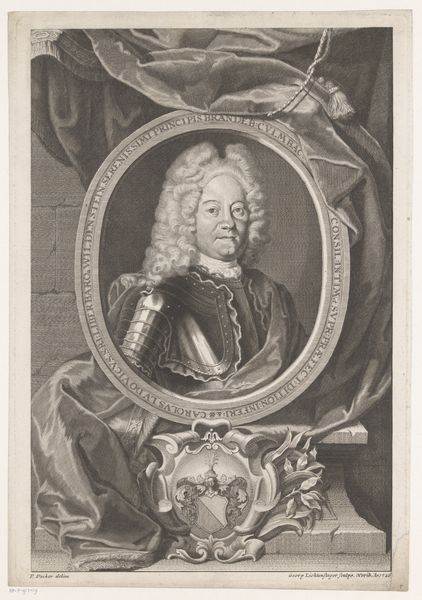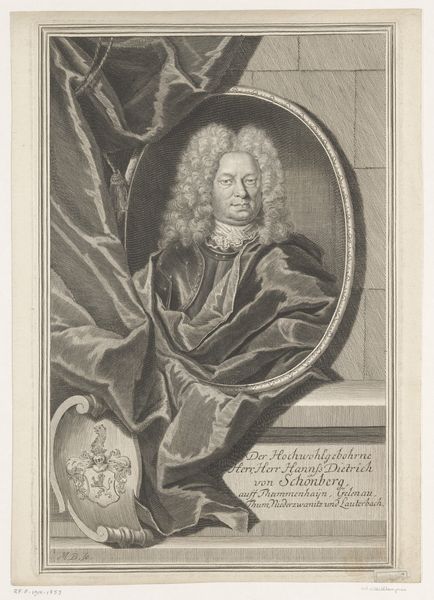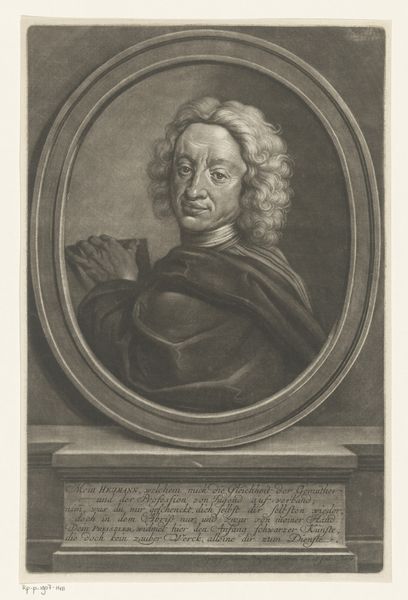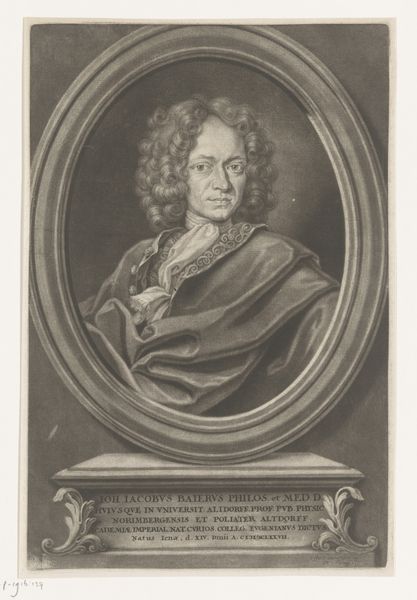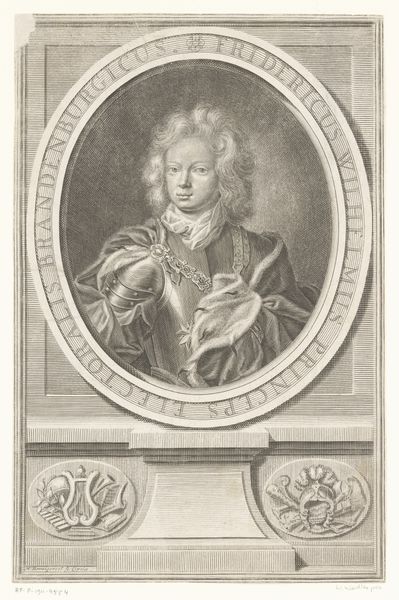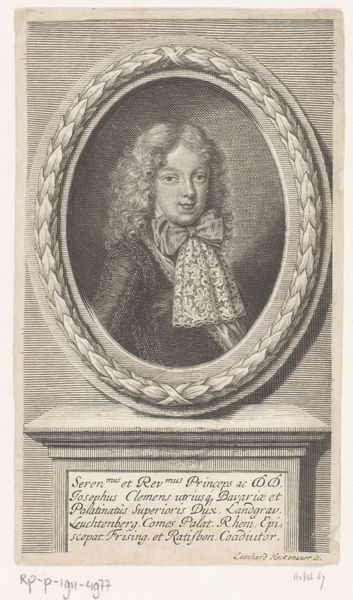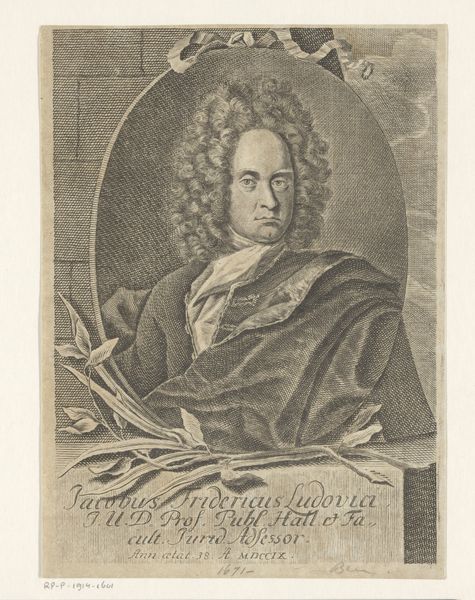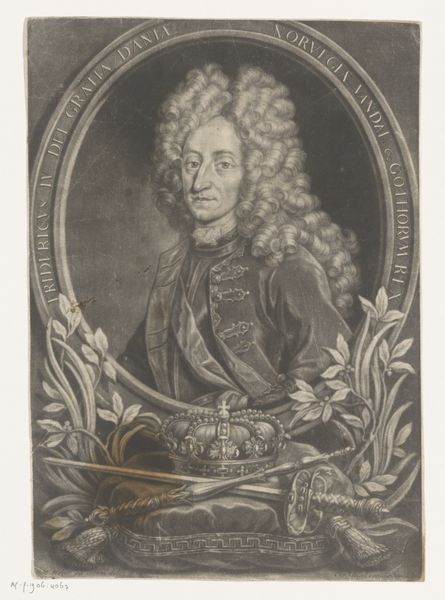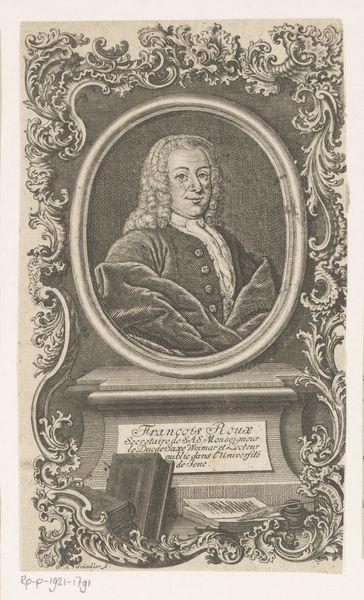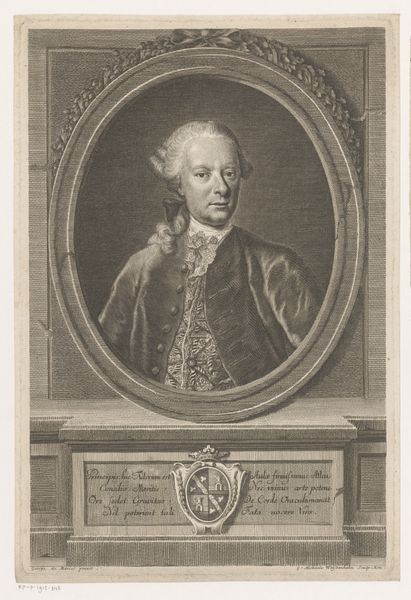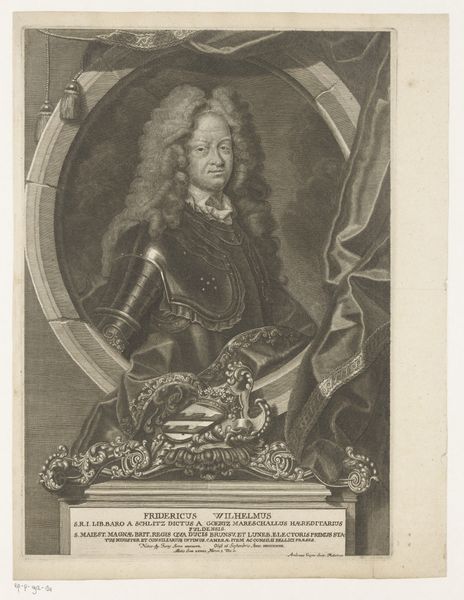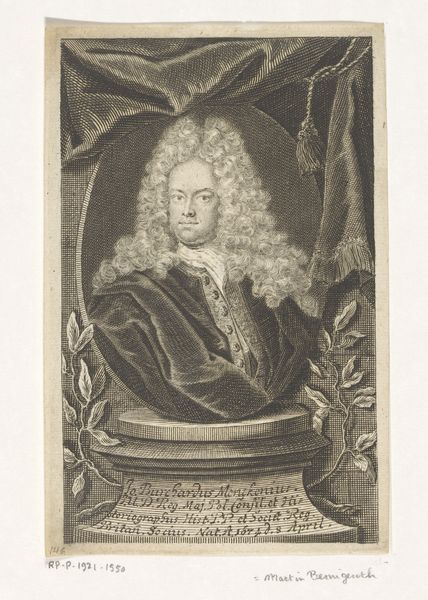
print, engraving
#
portrait
#
baroque
# print
#
portrait reference
#
portrait drawing
#
history-painting
#
engraving
Dimensions: height 213 mm, width 147 mm
Copyright: Rijks Museum: Open Domain
Editor: Here we have "Portret van Giorgio Baglivi op 34-jarige leeftijd," a print from 1703 by Claude Duflos. There's a certain gravity to it, almost unsettling, and it gives me a sense of intense formality mixed with some quite eccentric, alchemical details! What strikes you when you look at this piece? Curator: Oh, darling, you’ve nailed it! It’s theatrical, isn’t it? Almost like stepping onto a Baroque stage. What captivates me is how Duflos intertwines symbols of medicine—that serpent coiling around the laurel wreath—with this radiant sun face, like a character from mythology. One is a life force; the other suggests knowledge and honour. Do you think the symbolism reflects how people viewed physicians in Baglivi’s time? Editor: Possibly? He must have been pretty renowned to warrant such an elaborate portrait, especially with the... griffin? It's an intense look, but what could the symbolism signify in this portrait, particularly during the Baroque period? Curator: Good point! Think about the period: the Baroque era relished complexity, didn't it? The griffin – a mix of lion and eagle– might symbolize strength and wisdom, both qualities befitting a celebrated physician. Baglivi's piercing gaze meets ours, commanding attention and respect. In fact, maybe that animal lurking under the Griffin's paw has its own story to tell, too! What's your take? Editor: Now that you point it out, it feels like it is hinting to be a defeated foe of sorts… Thank you, that's made me see the piece in a completely new light. Curator: My pleasure. These historical portraits are little time capsules. They remind us that even across centuries, we’re still decoding symbols and human ambition. Isn’t that magical?
Comments
No comments
Be the first to comment and join the conversation on the ultimate creative platform.
